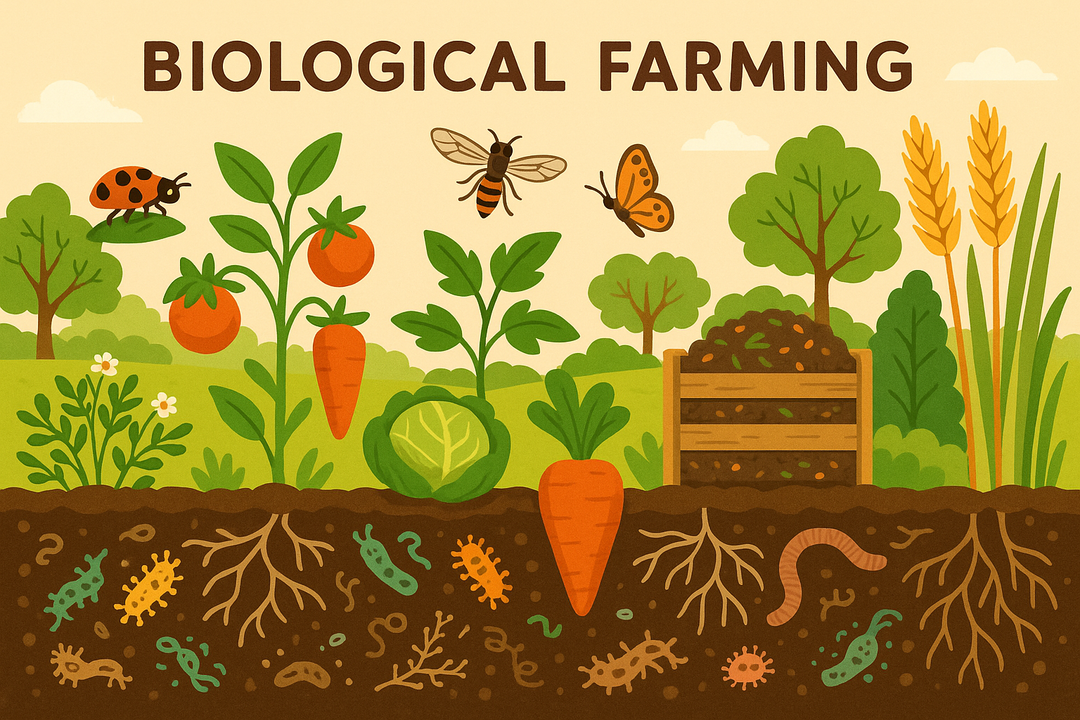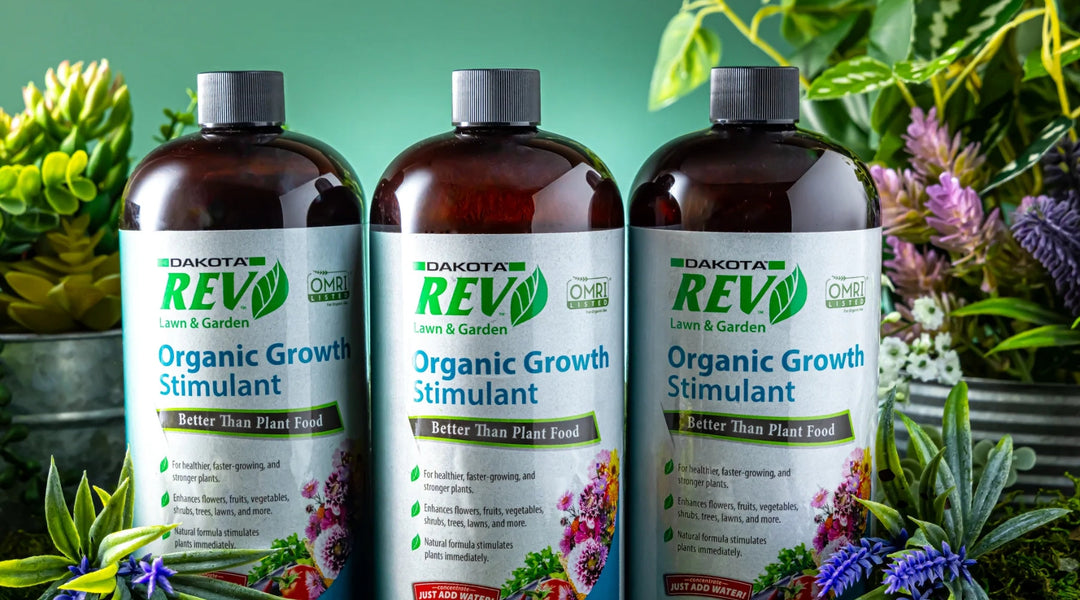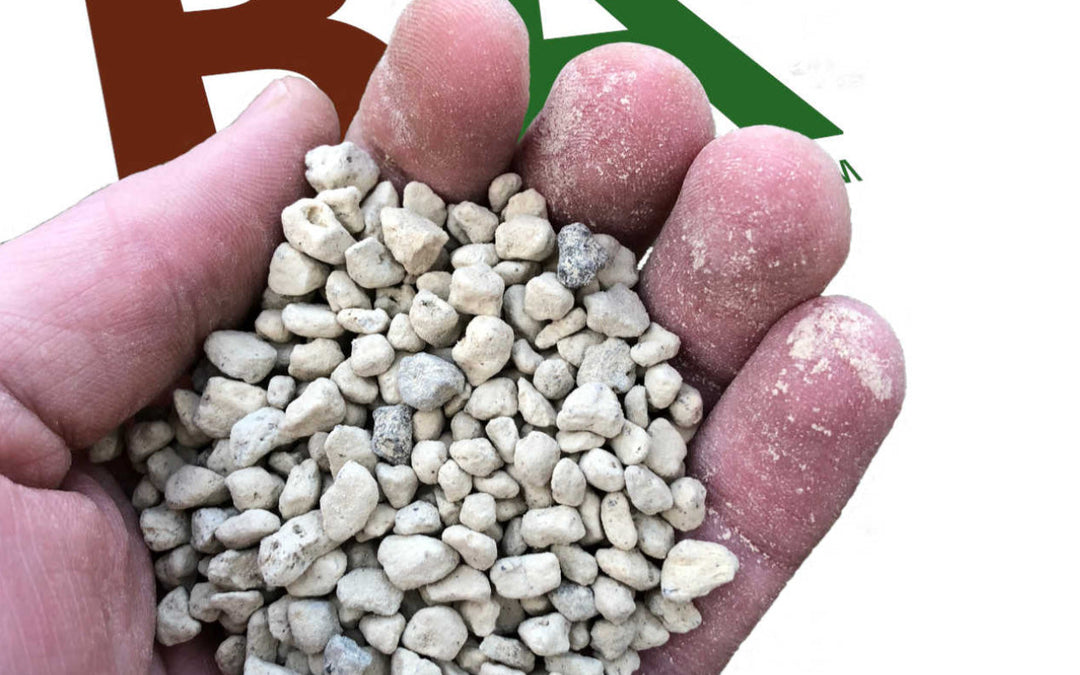What Fertilizer Do I Need?
If you want beautiful and healthy plants and crops, using a fertilizer that supports your soil is a must. But what kind of fertilizer is best? Let's take a look at the different types of fertilizer, how to understand N-P-K numbers on fertilizer, when to fertilize your plants and lawn, and why you should choose an organic fertilizer.
Kinds of Lawn Fertilizer
The different types of fertilizer can be broken down by ingredient and form. Ingredients tell us whether or not the fertilizer is organic or synthetic, while form determines whether it's liquid or granular. If you want to get more specific, you can break down the fertilizer's ingredients into the concentrations of each element, such as 10-10-10 fertilizer, 5-5-10 fertilizer, 24-0-4 fertilizer, and more.
Liquid or Granular Fertilizer
Liquid lawn fertilizer is designed to provide fast results because of its quick-release formula. You can choose organic or synthetic liquid fertilizer. Many are produced in convenient sprayer bottles that attach to the end of your hose for quick and easy applications.
A few notes of caution with liquid fertilizers: because the nutrients are available immediately, it's easier to cause fertilizer burns or over-fertilize your plants and crops. Most liquid fertilizers require more frequent applications because they don't provide an extended-release formula like granular styles.
Granular Lawn Fertilizer
Unlike liquid styles, granular lawn fertilizer provides longer-lasting support for your lawn and garden. Granular fertilizer is manufactured in multiple formulas that each release nutrients at different frequencies. Using a granular fertilizer provides more control for gardeners and landscapers in supplementing the nutrients in their lawns.
Granule formulas are made with tiny pellets. As they break down, the nutrients are dispersed into the soil and absorbed by the plants or grasses. Because the pellets break down slowly, they provide nutrients to the soil over a more extended period.
Organic vs. Synthetic Lawn Fertilizer
Organic certified products are all the rage lately, and it's no different when finding the best fertilizer for your lawn or garden. The difference between synthetic and organic fertilizer can be simplified like this: synthetic fertilizer feeds the plants while organic fertilizer feeds the soil.
Organic fertilizer is created using only natural ingredients for a formula that is more environmentally friendly and typically easier to handle and apply. Using organic fertilizer is also more likely to help create healthier soil in the long term because the natural materials support the health of the soil itself rather than only the plants or grasses within it. Pro tip: If you’re a fan of organic fertilizer, be sure to check out why we love our natural weed killers and eco-friendly ice melts!
Synthetic fertilizers contain more artificial chemicals and can be dangerous to animals and people if misused. Although synthetic fertilizers tend to be fast-acting, they don't provide sustained benefits and must be reapplied more frequently. In addition, synthetic formulas can burn plants if not used correctly.
What Is NPK in Fertilizer?
If you've been shopping for fertilizers, you've probably seen numbers on the bags and wondered what they mean. NPK stands for the nutrient levels in each soil. Labels like 5-5-10 fertilizer, 10-10-10 fertilizer, 24-0-4 fertilizer, and so on explain the concentrations of the three primary nutrients:
- Nitrogen (N)
- Phosphorus (P)
- Potassium (K)
Let's think of them like Skittles, except you're getting nitrogen, phosphorus, and potassium instead of flavors like strawberry, lemon, and green apple. Buying different combinations of nutrients is like being able to choose how many Skittles of each flavor you want in your bag. Each nutrient is labeled by weight percentage, so a bag of 20-5-5 fertilizer weighing 50 pounds has 10 pounds of nitrogen, 2.5 pounds of phosphorus, and 2.5 pounds of potassium.
Why Nitrogen, Phosphorus, and Potassium?
If you examine the ingredient list on a bag of fertilizer, you won't just see these three ingredients. You'll also see secondary nutrients such as sulfur, calcium, and magnesium and micronutrients like iron, zinc, copper, boron, and manganese. Fertilizers focus on the three macronutrients because those are the primary nutrients plants require in the highest concentrations.
Nitrogen for Plants
Nitrogen is essential to chlorophyll and creates strong, vibrant green leaves and grass. Although nitrogen is one of the essential nutrients, applying too much can cause pale grass or even burns.
How Phosphorus Helps Grass
Phosphorus is a crucial ingredient in fertilizers that are designed to support plants during their first stages of growth because it promotes strong and healthy roots. Roots that aren't well developed can prevent plants from receiving the nutrients they need. But, like nitrogen, you can also add too much phosphorus, which can cause yellowing in your leaves or blades of grass.
Potassium in Fertilizer
Potassium helps keep your grass and plants healthy by preventing diseases like tomato rot and protecting against stress and drought. To protect your plants during winter, choose a fertilizer with a higher potassium level to help thicken cell walls. Although it's difficult to over-fertilize with potassium, adding too much can cause deficiencies in other nutrients because potassium supports how phosphorus and nitrogen are absorbed.
How to Calculate Fertilizer Weight
If you regularly test your soil’s nutrient levels – which you should because soil nutrition is essential – the results will likely be recommended in pounds of each nutrient rather than a specific blend. It's important to remember that every fertilizer blend lists its nutrients in the same order:
- Nitrogen (N)
- Phosphorus (P)
- Potassium (K)
Lawn fertilizer recommendations are typically designed based on how much nitrogen is needed per year for every 1,000 square feet. Say you have a bag of 5-5-10 fertilizer weighing 50 pounds. Let's calculate the weight of each nutrient.
First, you'll want to make all your numbers consistent, which means calculating each percentage into a decimal. For 5-5-10 fertilizer, each five would become 0.05, and 10 would become 0.10.
Next, you'll multiply each decimal by the total weight of the bag – in this case, 50 pounds. These calculations will determine the amount of each nutrient by the bag's weight.
For 5-5-10 fertilizer in a 50-pound bag, you'll have 2.5 pounds of nitrogen and phosphorus and five pounds of potassium. If you're working with a 35-pound bag of 10-10-10 fertilizer, you'll have 3.5 pounds of nitrogen, phosphorus, and potassium.
Where to Buy Fertilizer?
If you're unsure what kind of fertilizer you need or have questions about application rates or fertilizer schedules, it's crucial to find a company that will assist you every step of the way. Rocky Mountain BioAg® has expert staff who are ready to help you find the perfect fertilizer or other nutrients and supplies for your lawn or garden. Whether you're an agriculture expert or someone starting a small garden, you will love the attentiveness and quality found at Rocky Mountain BioAg®.












Leave a comment